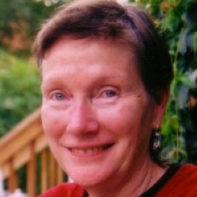Most people in the West know the name of Malala, the 17-year-old school girl from Pakistan, who has just won the Nobel Peace Prize for being an outspoken activist for universal education in the two years since being shot in the head by a Taliban gunman.
She has, in fact, become somewhat of an icon in the West.
But not so well known is the other champion of children’s education and Nobel Peace Prize recipient from neighboring India, Kailash Satyarthi.
Satyarthi has actually been a children’s rights activist for 30 years.
Satyarthi’s motivation to be a child advocate and protector began when he was just a child. As a boy just entering school for the first time, he noticed another small boy, a cobbler’s son, looking longingly through the school gate. Curious, Satyarthi went over to the boy’s father and asked why his son was not going to school.
The father replied, “We are people born to work.”
This response saddened Satyarthi and triggered his later motivation.
Though born into a Brahmin family in the decade following India’s Independence from Britain, Satyarthi, like Gandhi, saw the great inequality created by the old caste system. To make his point, he invited a group of fellow high-caste Brahmin bigwigs to a meal prepared by low-caste “untouchables.”
The invited guests, no surprise, boycotted the event and shunned his family, but this only provoked him to drop his Brahmin family name and adopt Satyarthi, meaning “truth seeker.”
Since that time, Satyarthi has spent his life cutting through lingering caste bias to defend the rights of the most poor and desperate citizens—children abandoned, orphaned or sold. These children, often as young as five-years-old, are saved from being trafficked into oppression by organizing raids, through direct intervention, community participation and consumer action. Satyarthi and the organization he founded have saved at least 82,800 lives since 2013!
In his freeing these children and providing education for each one, he has, like Malala, suffered much.
When he was trying to free illegally employed, teenage dancing girls trafficked from Nepal into India, he was beaten to the ground, head bleeding profusely, while men continued to beat him even more with bats and iron rods.
Inspired by Mahatma Gandhi, Satyarthi in a simple white cotton tunic had come to free the girls, putting his life in danger to save them.
Although Satyarthi has now come into modest prominence in India, he is not an international celebrity like 17-year-old Malala. But, he doesn’t care about fame. His reward is in exposing airless workrooms and mine shafts where Indian children, deprived of their childhood, live and work as virtual slaves, and in freeing them, providing them with free and quality education so that they may find a more promising future.
According to UNICEF, at least 28 million children in India from ages six to 14 work in mines and factories under dreadful conditions.
Satyarthi’s organization, Bachpan Bachoa Andolan (Save the Children Mission) is a grassroots movement he started in 1980 to rescue these children and to promote ethical trade practices, for although India does have labor laws, they are not enforced, and children remain sought-after dirt cheap employees.
Because he remains driven by moral urgency, Satyarthi’s seemingly hopeless task has not defeated him. He continues to work with great exertion and humility.
It is inspiring that a Hindu and a Muslim, an Indian and a Pakistani, are joined in the same advocacy for every child’s right to education in the face of social, economic and sexual bias—and that this joint Nobel Peace Award is given now as Pakistani and Indian shellfire is being exchanged across the disputed border of Kashmir, killing at least 20 villagers.
This also raises questions.
Will Malala ever be able to return to her homeland? In Pakistan, only a few exclusive schools offer a modern education. Basically the whole country faces an educational emergency: less than half the children complete even primary school, 75 percent lack basic math skills, the enrollment of girls in schools is among the lowest in the world and only half of Pakistanis can read and write.
In the Swat Valley where Malala lived, Taliban militants blew up and fully destroyed 159 schools.
None have been rebuilt by the Pakistani government, for the valley is now home to the fearsome Taliban leader, Maulana Fazlullan, who rules over the mud-walled farming villages. The few schools that survive are like dirt-floor barns without lights, where birds swoop in and out through the glassless windows. Class sizes are huge, spilling boys into courtyards or even onto the dirt roads where the main traffic is tractors and donkey carts.
With public education underfunded and in shambles, Pakistan’s poorest have turned to the madrasas, Islamic schools for boys that feed and house them while pushing the militant brand of Islam. The madrasas offer almost no instruction other than memorizing the Koran and, as ultra Orthodox Sunni, they oppose all music and festivals which were central aspects of Sufism, the tolerant form of Islam that had been traditional in this area.
More than two-thirds of the suicide bombers who have struck in Punjab, the most populous province in Pakistan, have attended these madrasas.
So, while Malala’s star shines bright in the West, the immediate chances of her returning to Pakistan to fulfill her dream of universal education for girls, as well as for boys, looks dim.
But for Kailash Satyarthi, he and his organization simply continue freeing children from slavery and oppression, whether the spotlight is on him or not.
Love elephant and want to go steady?
Sign up for our (curated) daily and weekly newsletters!
Editor: Emily Bartran
Photo: missy/Flickr












Read 1 comment and reply